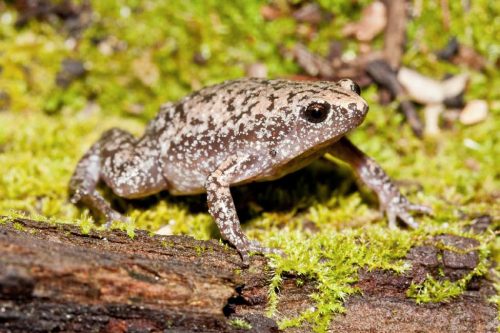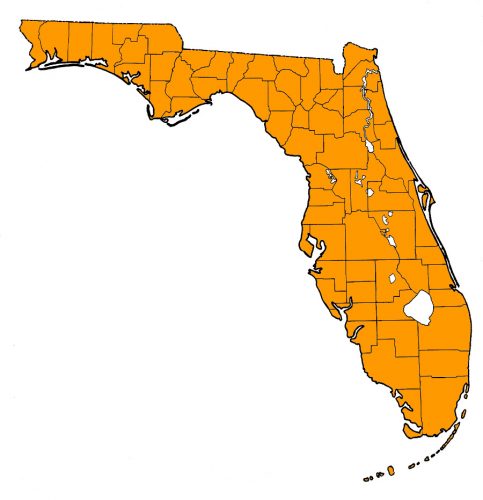Eastern Narrow-Mouth Toad
Scientific name: Gastrophryne carolinensis
These distinct little toads are easily recognizable for their oval bodies and pointed heads, as well as their unique call that is a single bleating trill. They’re shy and nocturnal, but they are native to Florida statewide, so while the may be hard to spot, they are easy to hear near ponds and wet ditches during the warm seasons. And it’s recommended that people carefully wash after handling them because their skin produces a mucus that is an irritant.
Appearance

Small and stout, they’re usually 1 to 1.25 inches long with oblong bodies that taper to a pointed head. They have smooth skin and long toes without webbing or bubbly ends. They’re usually brown to reddish to gray-black and have an irregular strip along their sides, often partially obscured by their blotchy coloring.
Behavior
These toads are somewhat shy and prefer to live close to their breeding pools year-round. They are nocturnal and can be found burrowed in sandy soil or debris, and even when calling during mating season, will do so from under cover of water or grassy shelter. Although they are highly terrestrial and live low to the ground, they are tolerant of brackish water which allows them to live in the Florida Keys and other island environments. It is believed that they can live more than 6 years in the wild.
Sound
Eastern Narrow-Mouth Toad
Food
Insectivores. They eat mainly ants, termites, beetles and other invertebrates.
 Habitat & Range
Habitat & Range
- Mainly the Southeastern United states (from Maryland into Florida and west into southern Illinois and central Texas)
- Florida: Statewide. Native.
- They are terrestrial, which means they live at ground-level, usually under leaf litter and soil.
Notable
These toads produce a toxic mucus on their skin that tastes terrible to many animals, and can significantly irritate or burn sensitive eye and mouth tissue. Although they have adapted to brackish water, they are less tolerant of urbanization and are losing habitat to land development.
More info
3-D Print
- Have access to a 3-D printer? Download from MorphoSource